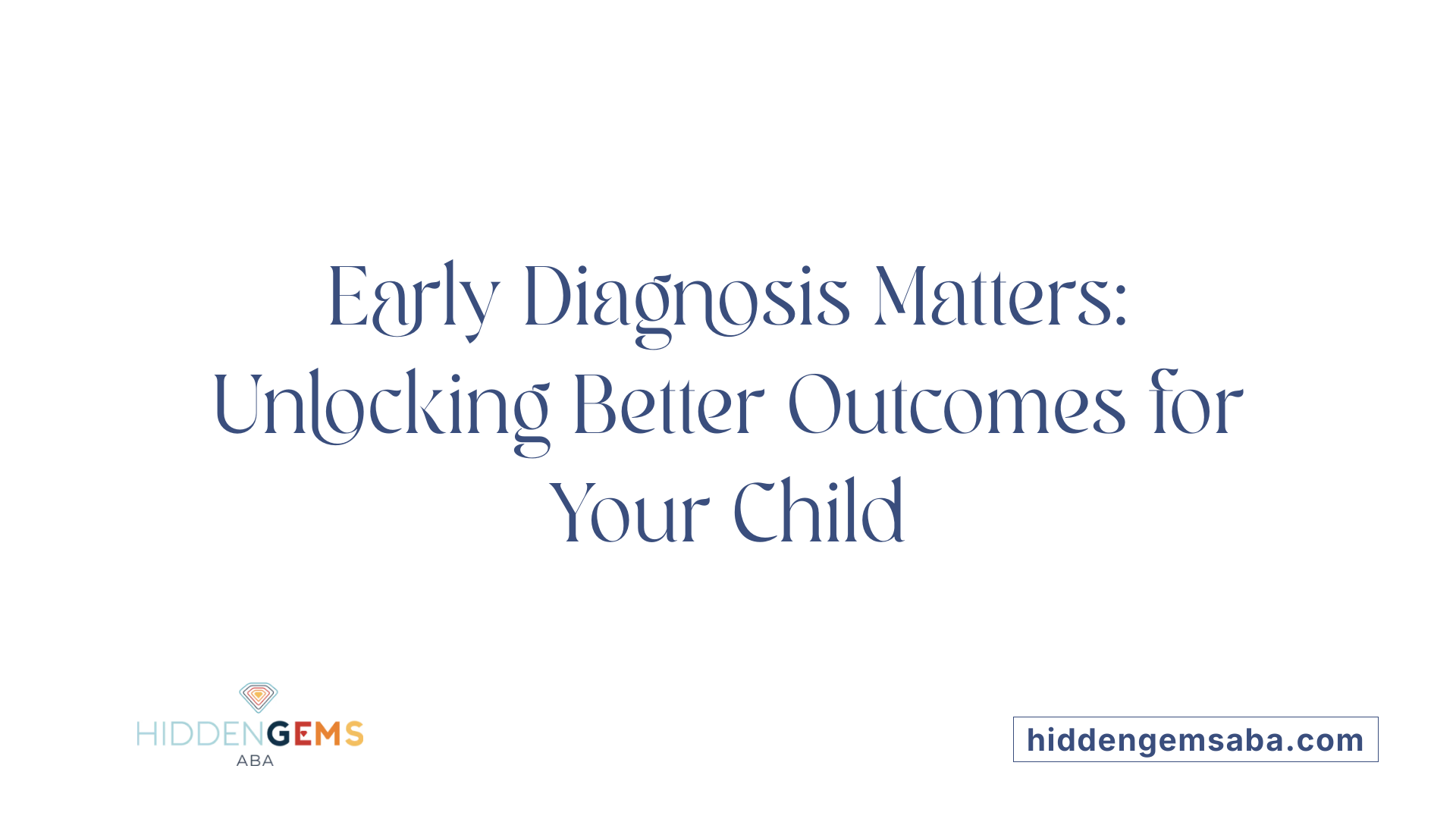Understanding ABA Therapy and Its Role in Autism Care
Autism Spectrum Disorder (ASD) impacts individuals differently, with varied behavioral and developmental challenges. Among the most researched and effective treatment approaches is Applied Behavior Analysis (ABA), a scientifically supported therapy that focuses on understanding and modifying behaviors through evidence-based strategies. This article explores the key aspects of ABA therapy, its benefits, the range of services available at specialized centers, and guidance on making informed decisions for autism treatment.
What is ABA Therapy and How Does It Work for Autism?
What is ABA therapy and how does it work for autism?
Applied Behavior Analysis (ABA) is a science-backed therapy designed to help individuals with autism develop essential skills and reduce challenging behaviors. It works by analyzing how environmental factors—called antecedents—trigger behaviors, and then adjusting these triggers or consequences to shape positive change.
Through ABA, therapists identify what motivates a person and then use techniques like positive reinforcement—offering rewards when a desired behavior occurs—to encourage improvement. This approach makes learning engaging and effective.
How ABA is applied to autism
ABA therapy has proven highly effective in addressing autism spectrum disorder (ASD). It helps children and adults increase their communication skills, social interactions, and independence. The therapy also aims to decrease behaviors that may interfere with learning or daily life.
Research indicates that early intervention with ABA can reduce life-long care needs by up to 66%. It is suitable for individuals of all ages, from early childhood to adulthood, offering tailored strategies to meet each person’s unique needs.
Individualized program design
Programs are customized based on thorough assessments of the individual’s behaviors, strengths, and challenges. A board-certified behavior analyst (BCBA) leads this process, creating a targeted plan that addresses specific goals—such as speech development, social skills, or self-care.
Each program is flexible, with adjustments made as progress is tracked. This ensures therapies evolve with the individual’s changing needs to maximize benefits.
Behavior assessment and modification strategies
B ABA programs use detailed data collection to monitor behavior patterns. BCBAs look at the ABCs—Antecedent, Behavior, and Consequence—to understand why behaviors happen.
Behavior technicians or Registered Behavior Technicians (RBTs) implement the planned interventions under supervision, employing strategies like task analysis, prompting, and shaping behaviors.
Positive reinforcement remains a central technique, rewarding helpful behaviors to increase their likelihood, making learning both effective and motivating.
Goals targeted by ABA (communication, social skills, etc.)
ABA therapy targets a wide array of developmental areas, including:
| Area of Focus | Specific Goals | Techniques Used |
|---|---|---|
| Communication | Talking, listening, requesting, expressive language | Speech therapy, visual aids, prompting |
| Social Skills | Sharing, turn-taking, making eye contact | Role-playing, social stories |
| Self-Care | Dressing, toileting, grooming | Chaining, task analysis |
| Academic Skills | Reading, math, writing | Discrete trial training, structured teaching |
| Behavior Regulation | Reducing tantrums, aggression | Reinforcement, behavior reduction plans |
Regular progress tracking ensures goals are met effectively, improving overall independence and quality of life.
Benefits and Effectiveness of ABA Therapy in Autism

What are the benefits and effectiveness of ABA therapy for autism?
Applied Behavior Analysis (ABA) therapy is recognized as a scientifically supported approach for helping individuals with autism spectrum disorder (ASD). It applies principles of learning and behavior science to foster positive development across various skills.
One of the main benefits of ABA therapy is its ability to enhance communication and social skills. Through tailored interventions, children and adults learn to express their needs, engage more effectively with others, and build meaningful social relationships.
In addition to improving communication, ABA helps in reducing problematic behaviors such as aggression, self-injury, or tantrums. The technique primarily relies on positive reinforcement, rewarding desirable behaviors to encourage their repetition. This approach not only decreases harmful behaviors but also promotes safer and more adaptive actions.
ABA's personalized programs are built around thorough assessments, allowing therapists and analysts to identify specific needs and goals. This customization ensures more effective treatment and ongoing progress monitoring through detailed data collection.
Research supports the long-term benefits of ABA, especially when introduced early. Studies show that early intervention, often before age four, can lead to a 66% reduction in long-term care needs. These early services help children develop crucial life skills like self-care, academic readiness, and motor development, contributing to greater independence as they grow.
The scientific validation of ABA comes from major health authorities such as the US Surgeon General and the American Psychological Association. They confirm ABA as an evidence-based best practice with proven outcomes, including improvements in intellectual functioning, language development, daily living skills, and social interactions.
ABA is effective across a broad age range—from young children to adults—making it suitable for lifelong support. Its flexible nature allows services to be provided in diverse settings, such as at home, in clinics, schools, or community environments.
In summary, ABA therapy offers significant benefits for individuals with autism. It promotes improved communication, reduces harmful behaviors, supports overall development, and is backed by scientific research. This comprehensive, individualized approach helps individuals reach their full potential and improve their quality of life.
Various Autism Therapy Services Offered at Centers

What types of autism therapy services are available at centers?
Autism centers provide a diverse range of evidence-based therapies designed to meet the unique needs of each individual. These services aim to improve various skills, enhance daily functioning, and promote social inclusion.''
A fundamental component is behavioral therapy, particularly Applied Behavior Analysis (ABA). ABA is widely regarded as an effective intervention and can be tailored to focus on specific behaviors or delivered as comprehensive programs such as Early Intensive Behavioral Intervention (EIBI) or the Early Start Denver Model (ESDM). These approaches utilize principles of positive reinforcement to encourage desirable behaviors and reduce problematic ones.
In addition to behavioral therapies, centers often offer speech therapy, occupational therapy, and physical therapy. Speech therapy addresses communication challenges, helping individuals improve their language skills and expressive abilities. Occupational therapy supports daily living skills, sensory integration, and motor development, essential for independence and quality of life. Physical therapy may be included to enhance gross motor skills such as balance, coordination, and movement.
Many centers also focus on social skills training, which is critical for fostering peer interactions and social understanding. This may involve structured social stories, role-playing, and group programs that promote cooperation, sharing, and emotional regulation.
Family involvement is emphasized across all services. Parent training and education programs empower families to implement strategies at home, ensuring continuity and reinforcement of skills outside the clinical setting. Collaborating with families helps tailor interventions more effectively and supports consistent progress.
Some centers integrate multiple therapeutic approaches to provide a comprehensive support system. This multidisciplinary approach often combines ABA, speech, occupational, and sometimes physical therapies, aligning goals for a holistic development plan.
In summary, autism centers offer a variety of services designed to support communication, socialization, independence, and overall well-being. These multidisciplinary programs are customized based on thorough assessments, ensuring each individual receives appropriate, effective treatment tailored to their unique profile.
| Service Type | Focus Area | Typical Techniques and Goals |
|---|---|---|
| Behavioral Therapies (ABA) | Behavior modification | Positive reinforcement, ABC analysis, skill acquisition |
| Speech Therapy | Language and communication | Speech exercises, language development, augmentative communication |
| Occupational Therapy | Daily living and sensory skills | Sensory integration, fine motor skills, adaptive behaviors |
| Physical Therapy | Gross motor skills | Movement coordination, balance, mobility |
| Social Skills Training | Peer interactions | Social stories, role-playing, group activities |
| Family Involvement | Home-based support | Parent training, coaching, home programs |
Centers strive to create an inclusive, supportive environment where individuals with autism can thrive through a combination of therapies designed around their specific needs.
Locating and Choosing the Right Autism Therapy Centers
How can I find autism therapy centers or ABA providers?
Families seeking support for autism can begin their search by exploring online directories maintained by professional organizations such as the Behavior Analyst Certification Board or state health departments. These directories list licensed providers well-versed in delivering evidence-based services including Applied Behavior Analysis (ABA).
When choosing a center, it’s important to look for those that offer comprehensive services like speech and occupational therapy alongside ABA, catering to different needs and age groups. Many reputable centers, such as "ABA Centers of Florida" and "Autism Care Partners," customize programs based on thorough assessments and provide options for in-home, center-based, or telehealth therapy. These centers often work closely with families and schools to create integrated treatment plans.
Funding plays a significant role in access to services. Some families utilize private insurance or pay out-of-pocket, while others may qualify for Medicaid or public support programs. Medicaid often coordinates services through Centers of Excellence (COE) providers, especially for evaluations and ongoing treatment planning.
Additionally, families can consult with local disability or autism support organizations for recommendations or referrals. Many communities also host informational sessions and support networks that can guide families toward reputable centers. Building a list of potential providers and scheduling initial consultations can help ensure the chosen center aligns with your child’s specific needs.
Consideration of the services offered
When evaluating therapy centers, consider their range of services. Effective autism centers typically provide not only ABA therapy but also speech therapy, occupational therapy, and other specialized interventions. This ensures a holistic approach and easier coordination among care providers.
Centers that incorporate community integration, family training, and caregiver support tend to enhance treatment outcomes. Look for programs emphasizing family involvement and that promote progress in everyday settings.
Insurance coverage and funding options
Understanding insurance coverage is fundamental. Many accredited centers accept major insurance plans, public aid, and Medicaid. Confirming coverage can reduce out-of-pocket costs significantly.
Some providers work with families to navigate billing and insurance claims, ensuring smoother access. It’s advisable to verify what specific services are covered and whether prior authorizations are needed.
Evaluating staff qualifications and expertise
It’s crucial to choose a center with well-qualified staff. Certified professionals such as Board Certified Behavior Analysts (BCBAs) oversee program development and supervision, ensuring treatment adheres to best practices.
Therapists like Registered Behavior Technicians (RBTs) implement daily interventions under supervision. Looking for centers that highlight staff credentials and ongoing training helps ensure high-quality care.
Emphasizing family-centered and community-focused programs
A family-centered approach means involving caregivers in planning and training, empowering them to support their child's progress at home and in the community.
Centers like Nevada Autism Center prioritize community involvement, offering services that promote social skills and independence.
Through collaboration and inclusive practices, these centers aim for a positive, supportive environment that respects individual differences and facilitates full community participation.
| Criteria | Examples and Details | Additional Information |
|---|---|---|
| Online resources | Professional directories, community referrals | “Find Autism Therapy Centers ABA Providers” search query |
| Service offerings | ABA, speech therapy, occupational therapy | Tailored programs for all ages |
| Funding options | Private insurance, Medicaid, public aid | Eligibility and coverage details |
| Staff qualifications | Board Certified Behavior Analysts (BCBAs), RBTs | Supervision and ongoing training |
| Family and community focus | Family involvement, community integration | Programs fostering independence and community access |
By carefully considering these aspects, families can select therapy centers that best support their child's development and well-being, ensuring access to high-quality, comprehensive autism care.
Enrolling in ABA Therapy and Insurance Coverage

What is involved in enrolling in ABA therapy and is it covered by insurance?
Enrolling in Applied Behavior Analysis (ABA) therapy typically begins with obtaining a formal diagnosis of autism from a qualified medical professional such as a pediatrician, psychiatrist, or developmental specialist. This diagnosis is essential as it provides the basis for many insurance plans to approve coverage.
Once a diagnosis is established, families often work with a behavioral health provider—most commonly a Board-Certified Behavior Analyst (BCBA)—to develop a personalized treatment plan. This plan outlines specific behavioral goals, targeted skills, and the type of therapy appropriate for the individual.
Insurance coverage for ABA therapy varies depending on state regulations and individual insurance plans. However, all 50 states have laws requiring some level of coverage for autism-related treatments, including ABA. Both Medicaid and private insurance often include ABA as an essential health benefit, but coverage details differ widely.
Most insurance companies require prior authorization before beginning therapy. This involves submitting detailed documentation proving medical necessity, including diagnostic reports and treatment plans from healthcare providers.
Families may encounter challenges such as coverage limits, network restrictions, or denied claims. In such cases, they might need to appeal decisions or seek advocacy assistance. It’s advisable to thoroughly review your insurance policy details, including what is covered, any copayments, annual or lifetime limits, and whether your provider is in-network.
In states like Texas, Medicaid fully covers ABA therapy, and many private insurers are mandated to do the same. Families should verify their specific policy details and be prepared to provide necessary documentation to ensure coverage.
Additional resources are available to help navigate insurance complexities, including state disability agencies, autism societies, and legal advocacy groups.
Understanding your insurance plan, staying informed about relevant state laws, and collaborating with authorized providers can greatly facilitate access to ABA therapy. Being proactive and prepared can help families secure the necessary support for their loved ones with autism.
Importance of Early Diagnosis and Intervention in Autism

Why is early diagnosis and intervention important for autism?
Early diagnosis and intervention are crucial steps in supporting children with autism, primarily because they leverage the brain's plasticity during its most adaptable years. During the early childhood years, a child's brain is highly receptive to learning and change, which makes this period ideal for applying targeted therapies.
When intervention begins early—often before age 3—it can lead to significant improvements in critical areas such as social communication, language development, and behavioral skills. These improvements are supported by scientific research, which shows that early therapy can dramatically alter long-term outcomes for children with autism.
Addressing delays and problematic behaviors proactively is another vital benefit of early diagnosis. By implementing therapies that focus on communicative and social skills, as well as reducing problematic behaviors through positive reinforcement strategies, children are better equipped to navigate their environments.
Family involvement plays a pivotal role in early intervention. Engaged families can help reinforce skills learned during therapy sessions, creating a consistent and supportive environment for learning.
Early intervention not only fosters skill development but can also reduce the severity of autism symptoms over time. For example, intensive behavioral therapies such as Applied Behavior Analysis (ABA) have been shown to improve adaptive behaviors and decrease challenging behaviors.
Research shows that children who receive early intervention are more likely to attain better educational and social outcomes, reducing the need for lifelong support.
In summary, early diagnosis and prompt treatment maximize developmental potential, foster independence, and improve quality of life for children with autism. The combination of neuroplasticity, family support, and evidence-based therapies creates a strong foundation for children to reach their full potential.
Comparing Different ABA Programs and Centers
How do different ABA therapy programs and centers compare?
ABA therapy programs and centers can vary significantly in their environment, approach, and additional features. Understanding these differences helps families choose the most suitable setting for their child.
Home-Based ABA Therapy: This type of therapy takes place within the child’s own home environment. It allows for direct observation of daily behaviors, family interactions, and routines. The intimate setting helps therapists design interventions that are highly relevant to the child's natural context. Parents and family members often participate actively, learning strategies to reinforce progress outside therapy sessions.
Center-Based ABA Therapy: In contrast, center-based programs occur in dedicated facilities equipped with specialized tools and resources. These settings provide a structured, consistent environment that supports socialization among peers and access to diverse activities. They are ideal for promoting skills like communication and social interaction in a social environment, often using equipment and structured routines that might not be available at home.
Program Customization and Client Needs: Both types of programs are tailored to individual needs based on thorough assessments by Board Certified Behavior Analysts (BCBAs). The goal is to develop a personalized plan that considers the child's strengths, challenges, and preferences. High-quality programs emphasize continuous monitoring and adjustment of goals to ensure maximum progress.
Benefits of Structured Settings: Center-based therapies offer benefits such as predictable routines, social opportunities, and access to resources that can enhance learning. These environments support the implementation of evidence-based practices, which can lead to higher engagement and more consistent skill acquisition.
Generalization of Skills Across Environments: A crucial aspect of effective ABA therapy is the transfer of skills learned in one setting to others. While home-based therapy promotes real-world application, center-based therapy fosters generalization through social interactions in a controlled environment. Combining both approaches can often lead to better outcomes, ensuring children can adapt skills across various contexts.
Choosing the Right Environment for the Child: Selecting between home-based and center-based ABA depends on the child's unique needs, family circumstances, and priorities. Some children benefit most from the naturalistic approach of therapy at home, especially if family involvement is a priority. Others may thrive with the structure and social opportunities present in a center setting.
Ultimately, the effectiveness of ABA depends more on the quality of implementation and the individual child's needs than on the type of setting alone. Consulting with experienced BCBAs can help families make informed decisions that align with their goals and their child's best interests.
| Aspect | Home-Based ABA | Center-Based ABA | Additional Details |
|---|---|---|---|
| Environment | Child's natural home | Dedicated facility | Customized routines, familiar surroundings |
| Social Interaction | Limited to family | Peers and therapists | Supports peer interaction and social skills |
| Resource Availability | Household supplies | Specialized tools, equipment | Enhances specific skill learning |
| Flexibility | High | Moderate | Adaptable to family schedule |
| Skill Generalization | Promotes real-world skills | Facilitates social and communication skills | Combining both strategies often yields the best results. |
Making Informed Decisions and Embracing the Path to Growth
Choosing the right ABA therapy center and program is a crucial step toward supporting a child with autism. Understanding the science behind ABA, its proven benefits, and the available services can empower families to make informed choices. Early diagnosis and intervention pave the way for more effective treatment outcomes, while thoughtful evaluation of center options ensures tailored, comprehensive care. With the collaboration of qualified professionals and family involvement, therapy programs can significantly enhance communication, social skills, and independence, fostering a more inclusive and supportive environment for individuals with autism to thrive.
References
- Applied Behavior Analysis (ABA) | Autism Speaks
- ABA Centers Of Florida | Top Rated ABA Therapy & Autism Care
- Nevada Autism Center: ABA Therapy in Las Vegas
- Autism Therapy Center in Pawtucket, RI | ABA, Speech ...
- ASD Life ABA Therapy
- Accessing Services for Autism Spectrum Disorder - CDC
- Children's Autism Program | Texas Health and Human Services





